Click
HERE to view the changes to our visitor guidelines -
effective Monday, April 3, 2023
Haga clic
AQUÍ para ver los cambios en nuestras pautas para visitantes
COVID-19 (Novel Coronavirus) Information Center
In light of the decrease in COVID-19 positive patients, we will no longer be posting our weekly update, but our commitment to transparency remains the same. If there is a surging trend, then we will adapt as we have done throughout the entire pandemic and keep you informed. We appreciate our community's support and continued encouragement as we continue caring for patients.
Para leer los datos del nuevo coronavirus (COVID-19) en español, haga clic AQUÍ.
Vaccine Information
Please visit Tulare County Health & Human Service Agency’s website for the latest information regarding COVID-19 vaccine information in Tulare County
Tulare County HHSA website: https://covid19.tularecounty.ca.gov/covid-19-vaccine/
A guide to help you make decisions and seek appropriate medical care. Click
on the button link below to learn more:
Coronavirus Self-Checker
Telephone visits with your provider are now available
Click Here to Learn More
Kaweah Health and Sequoia Health and Wellness Centers are providing patients with access to telephone visits with their providers for select health services. Now you can receive the care you need without having to leave the comfort and safety of your home.
Community Resource (Information) Line
We have established a community information line that you may call anytime for information about COVID-19 testing, changes in our visitor or entrance policies and more. The line will be updated as new information is available.
Kaweah Health Community Resource Line - Call (559) 624-4640
Click HERE for more information about this free (no co-pay) service.
From Center of Disease Control and Prevention (CDC)
Watch for Symptoms
Reported illnesses have ranged from mild symptoms to severe illness and death for confirmed coronavirus disease 2019 (COVID-19) cases.
The following symptoms may appear 2-14 days after exposure.*
- Fever
- Cough
- Shortness of breath
Take steps to protect yourself
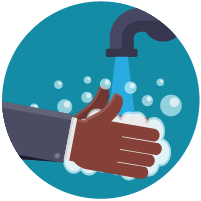
|
Clean your hands often
|
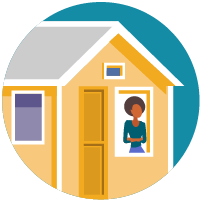
|
Avoid close contact
|
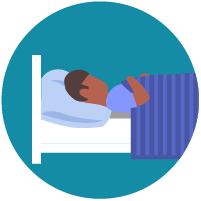
|
Stay home if you’re sick
|
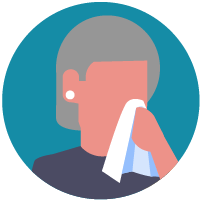
|
Cover coughs and sneezes
|
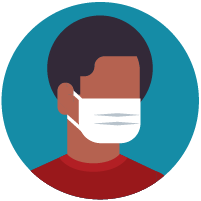
|
Wear a facemask if you are sick
|
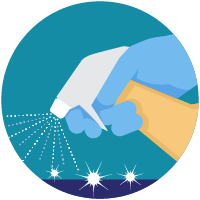
|
Clean and disinfect
To disinfect:
Options include:
|
Share Facts About COVID-19
Know the facts about coronavirus disease 2019 (COVID-19) and help stop the spread of rumors.
What you need to know
Coronavirus disease 2019 is a new disease that causes respiratory illness in people and can spread from person to person. This virus was first identified during an investigation into an outbreak in Wuhan, China.
What to do if you are sick
If you are sick with coronavirus disease 2019, or suspected of being infected with it, follow the steps in this fact sheet to help prevent spreading it to people in your home and community.
Para leer este mensaje en Espanol haga clic AQUI.
What You Should Know
- Older People & People with Chronic Diseases at Higher Risk
- Steps to prevent illness
- What to do when sick
- Symptoms
- Common questions
Information For
- Communities, schools, and businesses
- Healthcare professionals
- Health departments
- Travel
- Laboratories
Situation Updates
COVID-19
Background
CDC is responding to an outbreak of respiratory disease caused by a novel (new) coronavirus that was first detected in China and which has now been detected in more than 100 locations internationally, including in the United States. The virus has been named “SARS-CoV-2” and the disease it causes has been named “coronavirus disease 2019” (abbreviated “COVID-19”).
On January 30, 2020, the International Health Regulations Emergency Committee of the World Health Organization declared the outbreak a “public health emergency of international concern” (PHEIC). On January 31, 2020, Health and Human Services Secretary Alex M. Azar II declared a public health emergency (PHE) for the United States to aid the nation’s healthcare community in responding to COVID-19. On March 11, 2020 WHO publicly] characterized COVID-19 as a pandemic.
Source and Spread of the Virus
Coronaviruses are a large family of viruses that are common in people and many different species of animals, including camels, cattle, cats, and bats. Rarely, animal coronaviruses can infect people and then spread between people such as with MERS-CoV, SARS-CoV, and now with this new virus (named SARS-CoV-2).
The SARS-CoV-2 virus is a betacoronavirus, like MERS-CoV and SARS-CoV. All three of these viruses have their origins in bats. The sequences from U.S. patients are similar to the one that China initially posted, suggesting a likely single, recent emergence of this virus from an animal reservoir.
Early on, many of the patients at the epicenter of the outbreak in Wuhan, Hubei Province, China had some link to a large seafood and live animal market, suggesting animal-to-person spread. Later, a growing number of patients reportedly did not have exposure to animal markets, indicating person-to-person spread. Person-to-person spread was subsequently reported outside Hubei and in countries outside China, including in the United States. Some international destinations now have apparent community spread with the virus that causes COVID-19, as do some parts of the United States. Community spread means some people have been infected and it is not known how or where they became exposed. Learn what is known about the spread of this newly emerged coronaviruses.
Illness Severity
The complete clinical picture with regard to COVID-19 is not fully known. Reported illnesses have ranged from very mild (including some with no reported symptoms) to severe, including illness resulting in death. While information so far suggests that most COVID-19 illness is mild, a reportexternal icon out of China suggests serious illness occurs in 16% of cases. Older people and people of all ages with severe underlying health conditions - like heart disease, lung disease and diabetes, for example - seem to be at higher risk of developing serious COVID-19 illness.
Learn more about the symptoms associated with COVID-19.
There are ongoing investigations to learn more. This is a rapidly evolving situation and information will be updated as it becomes available.
Risk Assessment
Outbreaks of novel virus infections among people are always of public health concern. The risk to the general public from these outbreaks depends on characteristics of the virus, including how well it spreads between people; the severity of resulting illness; and the medical or other measures available to control the impact of the virus (for example, vaccines or medications that can treat the illness). That this disease has caused severe illness, including illness resulting in death is concerning, especially since it has also shown sustained person-to-person spread in several places. These factors meet two of the criteria of a pandemic. As community spread is detected in more and more countries, the world moves closer toward meeting the third criteria, worldwide spread of the new virus.
It is important to note that current circumstances suggest it is likely that this virus will cause a pandemic. This is a rapidly evolving situation and CDC’s risk assessment will be updated as needed.
Current risk assessment:
- For the majority of people, the immediate risk of being exposed to the virus that causes COVID-19 is thought to be low. There is not widespread circulation in most communities in the United States.
- People in places where ongoing community spread of the virus that causes COVID-19 has been reported are at elevated risk of exposure, with increase in risk dependent on the location.
- Healthcare workers caring for patients with COVID-19 are at elevated risk of exposure.
- Close contacts of persons with COVID-19 also are at elevated risk of exposure.
- Travelers returning from affected international locations where community spread is occurring also are at elevated risk of exposure, with increase in risk dependent on location.
CDC has developed guidance to help in the risk assessment and management of people with potential exposures to COVID-19.
